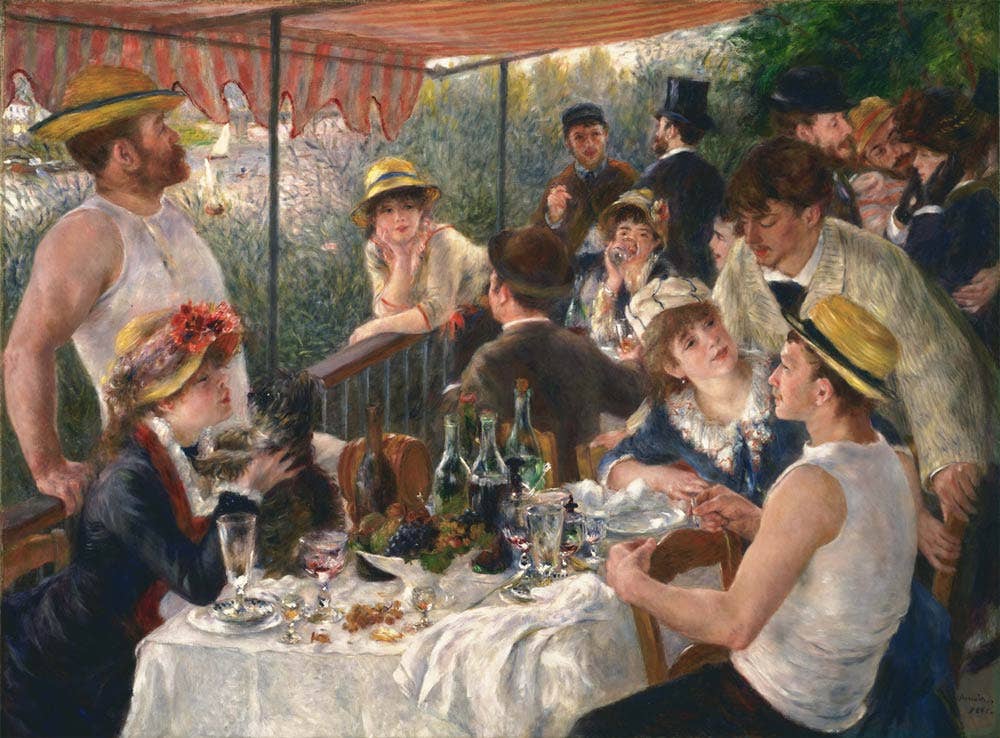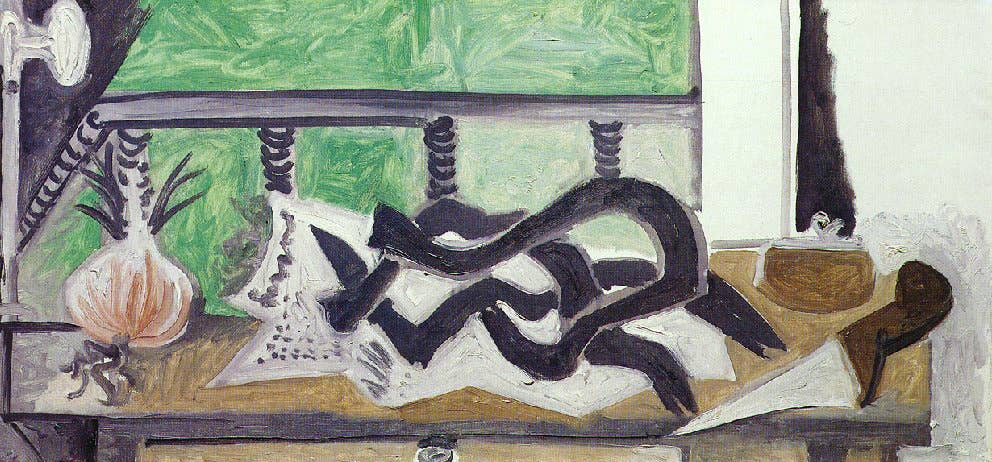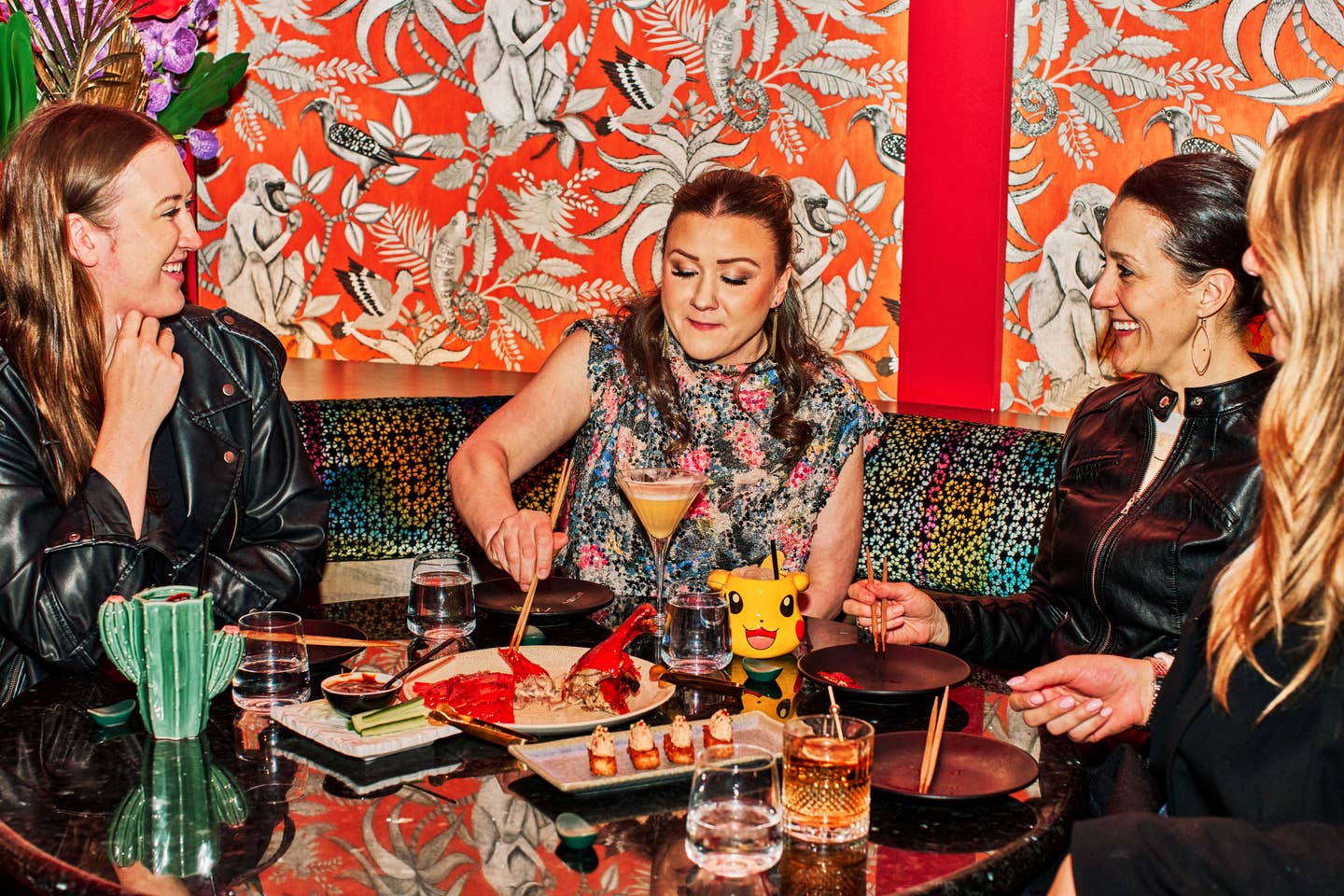
The History of Lunch as Seen in 6 Works of Art
The mid-day meal is a surprisingly popular subject for artists
Associated with the everyday rather than the sublime, food has long had an uncertain relationship with art. But depictions of food also give artists immediate material to explore new techniques and approaches, and meals allow for a whole range of subjects over the table. Artists have left legacies of love for eating and cooking: Monet kept detailed cookery notes, as did Georgia O’Keefe, and Dalí dedicated a food-as-erotica tome to his wife, Gala. And so, from Medieval illuminated manuscripts to Dutch old-master still lifes, a Versailles dining room to Picasso’s Instagram-like portrait of a favorite fish stew, lunch surfaces as subject in art history with surprising regularity. The following examples go beyond a desire to capture perfect market produce or a pristine tableau of fruit and flowers. They are mid-day meals of substance that allow us to see how art literally illustrates the history of food.
Manuscripts from the Middle Ages depict feasting on a heroic scale, with large roasts, birds, and playful dishes in procession for hours and hours (and pages and pages). Flavor came from the heavy use of spices and exotic game animals were prized, including peacock, bear, and even the occasional porpoise. Phébus' Livre de chasse contains detailed instructions for hunting and butchering animals according to each species' habitats and behaviors. Here we have a pre-hunt lunch, an event which would continue in importance through the time of Downton Abbey. The picnic comes replete with linens and a page boy flourishing an embroidered napkin, but while the lord has an elegant table, his peers are relegated to the ground. And what's on the menu? It's as hierarchical as the seating. Bread milled from fine white flour for the head table, brown for the groundlings. Entertainment includes the presentation of "fewmets," or droppings. This specific folio of the widely disseminated manuscript can be found at the Bibliothèque Nationale de France in Paris.
Breakfast of Mussels, Cheese, Bread, and Porridge, Floris van Schooten, c. 1615
Breakfast of Mussels, Cheese, Bread, and Porridge by Floris van Schooten
If looking for lunch, still life is a good place to start. In their famous seventeenth-century assemblages, the Dutch mastered the gleam of serving-ware, the jewel tones of fruit, and the glint of golden herring. Whether with buffets of vermilion lobster or more monochrome "breakfast pieces," the Dutch still life represents a proud, powerful, and well-fed people. Fish, beer, and cheese were major industries, while colonization brought new flora and fauna. Ham was so central to the Dutch diet that there is an entire genre, hammetjes, dedicated to its portrayal. Even bread was a patriotic choice; the Netherlands held stores of Baltic grain that ensured against the famine afflicting their neighbors. Here, Van Schooten makes simple choices in a time of plenty. Mussels were a low food, and he avoids the silver accoutrement of a more luxurious spread. But with evidence of cheese freshly sliced, and mussel shells strewn just so, there is still abundance and appetite. Private collection.
This painting is a near-copy of one commissioned by none other than Louis XV to decorate Versailles' new dining room. Nicolas Lancret brought the outdoors in but kept the linen and blanc-de-chine china. In spite of the table's trappings, there's a destruction of decorum. A partially eaten ham takes center-stage, but the diners seem more interested in their glasses than the leftovers on their plates. They are ruddy with wine, probably the King's champagne, and have overturned their empty bottles. Bacchus presides over this pursuit of pleasure that could only occur away from Royal convention. The theme is actually a hunting luncheon in the tradition of the Livre de chasse—Louis XV would gather with friends after his expeditions and carouse for hours. This bacchanal belongs to the permanent collection of the Museum of Fine Arts, Boston.
In the middle of the nineteenth century, a renovation of Paris opened up its avenues and made way for an explosion of public eating places. Meanwhile, the Impressionists shocked their contemporaries not only with color choice and perspective, but by treating the everyday as a legitimate subject. With these two phenomena at play, we see a lot of lunch.
"Impressions" of Parisian life inevitably included bourgeois restaurants, such as Le Restaurant Fournaise on Croissy Island, a suburban idyll on the outskirts of Paris. Both Monet and Renoir captured the leisure class in ecstatic relaxation over dishes like fritture de saine (fried fish Seine style) and omelette au lard (bacon omelette). Although impossible to identify what the canoeists and café goers actually ate, their satiety and conviviality are palpable. See this masterpiece at the Phillips collection in Washington, DC.

As an eater, Picasso was in turns abstemious and voracious. The food we find in his paintings follows the same pattern. The roll and soup in The Blind Man's Meal and the self-explanatory chicken in Chicken, Glass, Knife and Bottle demonstrate a primal understanding of hunger. But The Fish Stew's story is of pleasure, not deprivation—Picasso's wife Jacqueline told Vogue, "One day I made him a stew of eels, a masterwork. He decided to paint it, rather than eat it. Afterwards he dedicated the painting to me. There, that's a good subject for your article, isn't it?" Private collection.
Claes Oldenburg, Giant BLT (Bacon, Lettuce, and Tomato Sandwich), 1963
Post-war, lunch looks different. It speaks of industry, as in Warhol’s soup cans, Wayne Thiebaud’s assembly lines of cake, or James Rosenquist’s collages of processed food and classic cars. But this vinyl BLT balances modern manufacturing with a handmade sensibility. The soft sculpture allows for the curator to make the BLT of his or her dreams—each time it is installed, the lettuce and bacon can be balanced differently, slipping out just so or nestling neatly. Elsewhere, the artist presented pneumatic French fries with congealed splats of ketchup and a very-rare looking “floor burger.” Oldenburg makes fun of the art market with his unexpected subject matter, but he also makes his work highly relatable.
Lunch can be as extravagant as an all-day champagne affair, or it can be as elemental as a sandwich. And art can be as serious as the minimalist movement taking over in Oldenburg's era, or it can be a blown-up-BLT. Collection of the Whitney Museum of American Art.
Keep Reading
Continue to Next Story










